- Astronomy 6-12
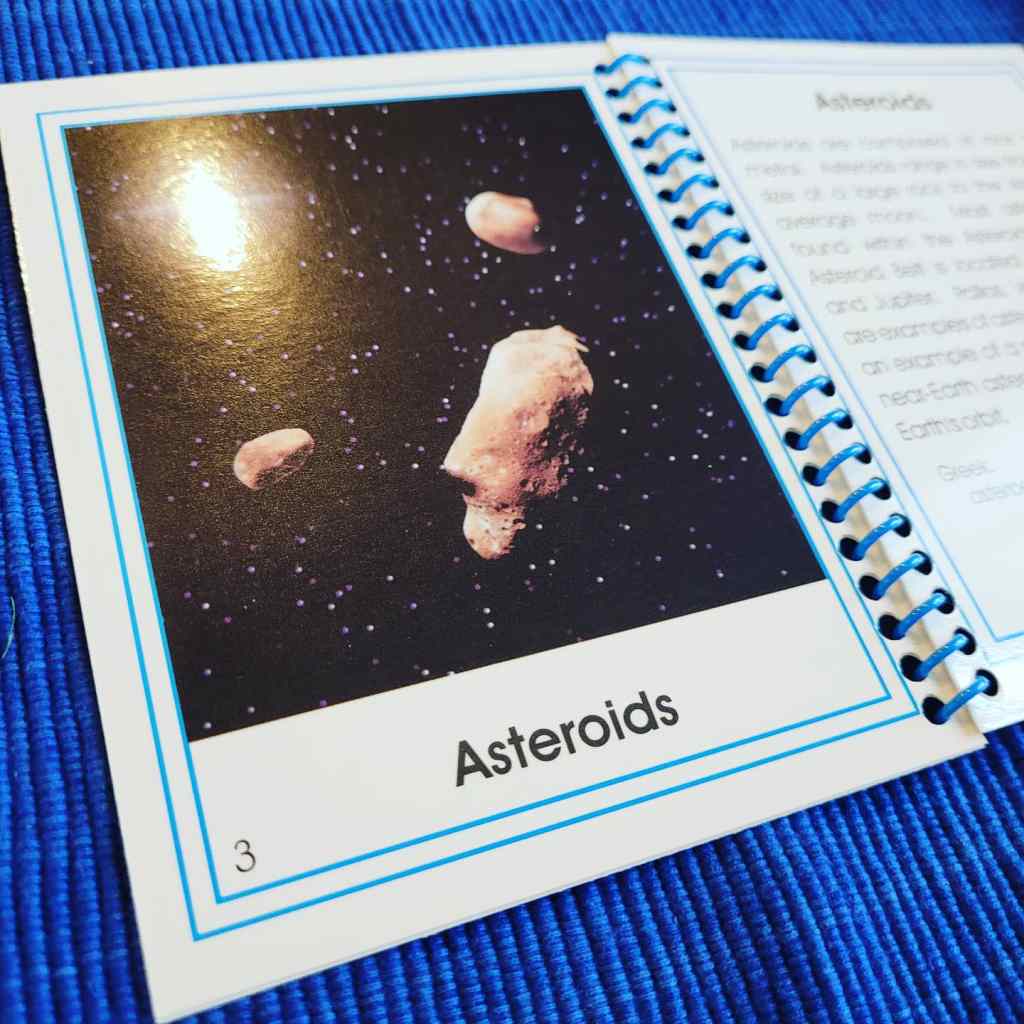
- As with any Montessori Research and Development materials, you can immediately recognize the company’s style. The layout of the materials and content are very well organized and consistent. The vocabulary is rich, and the syntactic structure is never a distraction.
- Studying astronomy through The Solar System Elementary material will allow children to contrast planets, understand relationship between different bodies, reinforce scientific knowledge, and discover special features for each planets.
Materials

- 300+ Nomenclature Cards (102 three-part card sets)
- 14 Booklets
- 17 Wallcharts
More About the Content
- The content of the Solar System material is an excellent source of non-fictional reading. Each booklet contains cross-disciplinary knowledge that can be revisited and reinforced. You will find celsius/ fahrenheit/kilometers (math), mythology (social study), atmospheric composition (chemistry), planet composition (geology), shapes (geometry), and of course astronomy-related vocabulary.

- The booklets on planets are organized in the same manner:
- -short description and mythology
- -distance from the Sun and temperature
- -planet’s composition
- -moons and rings
- -rotation period
- -revolution period
- -atmospheric composition
- -special features

- Booklets #12, #13, #14 cover:
- -dawrf planets
- -asteroid belt, Kuiper belt, scattered disc, and Oort cloud.
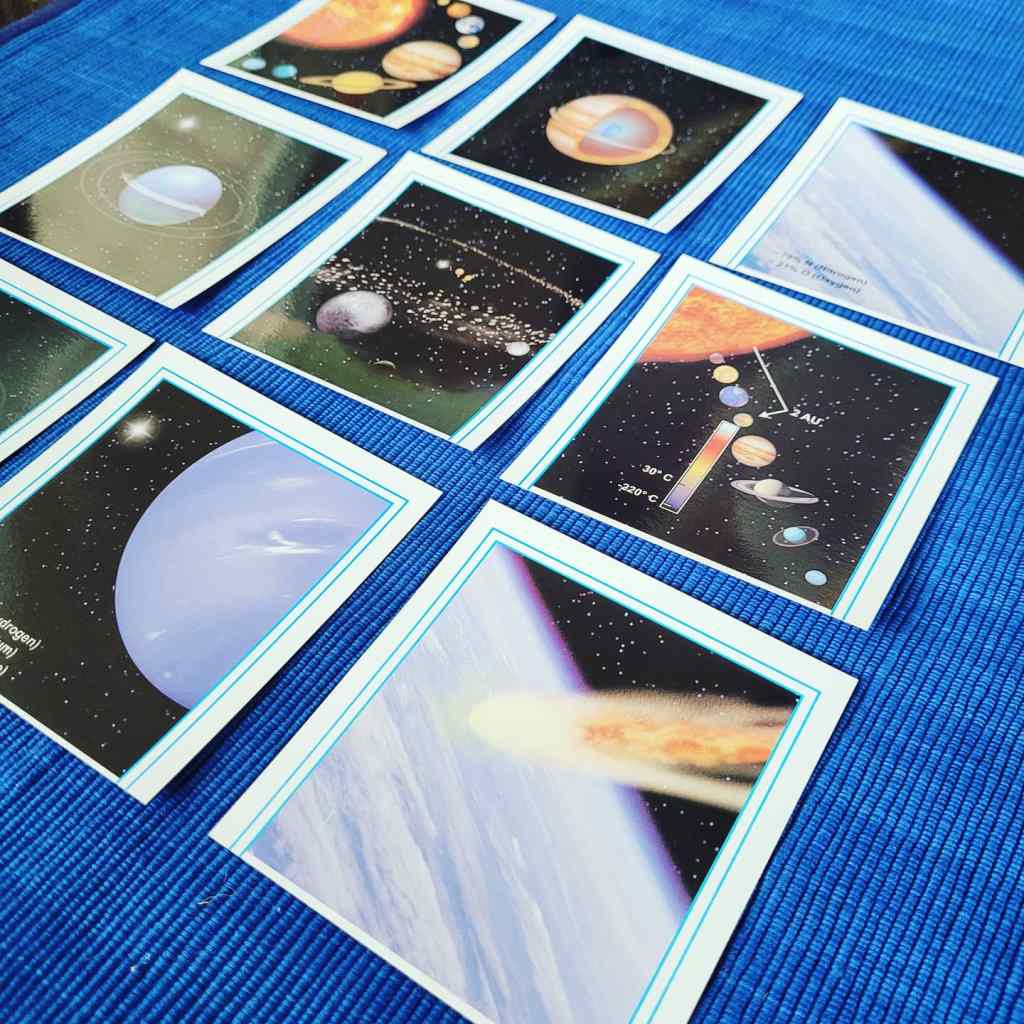
- The Wallcharts offer a quick overview of the booklets’ content. The graphics are enticing for children and adults alike. They appear to be hand drawn and realistic at the same time.
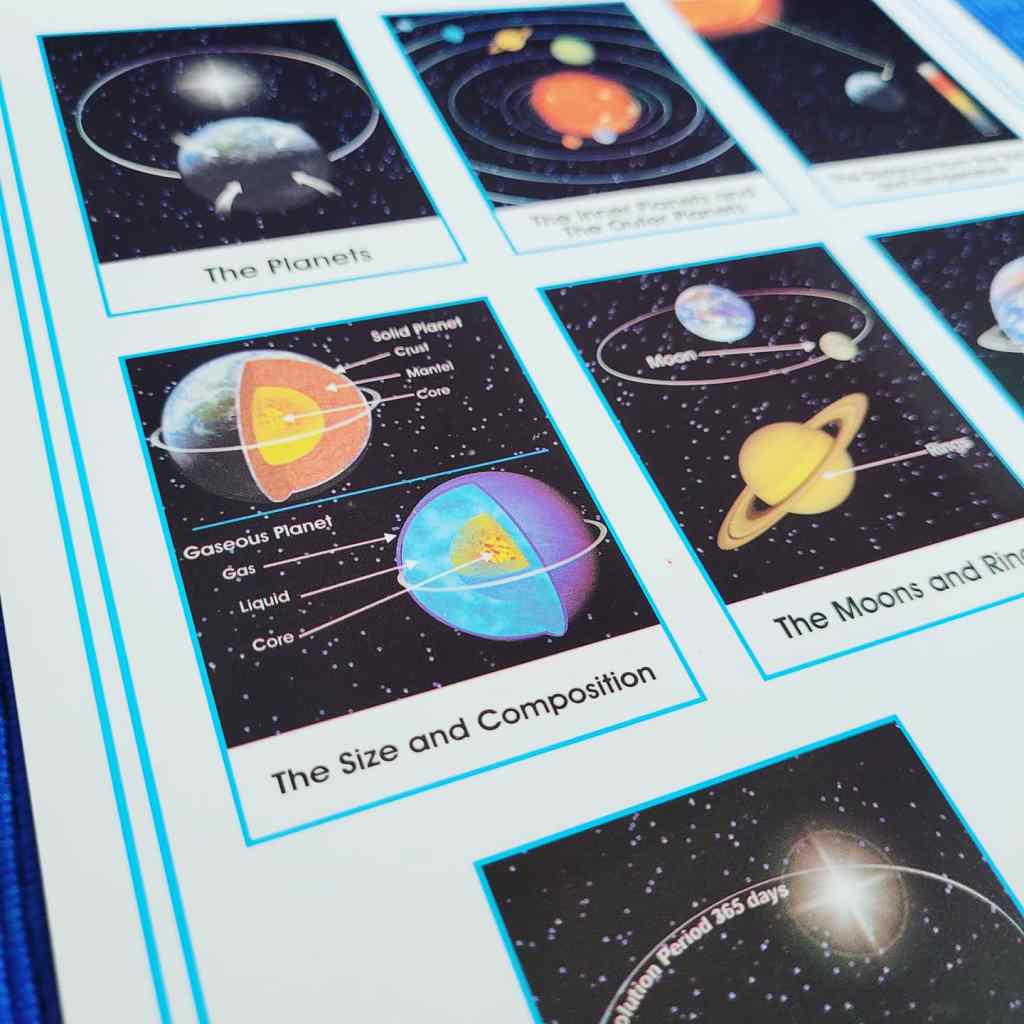
How to Use it
- Nomenclature Cards are a classic Montessori material. They consist in sets of 3-part cards: one picture, one label, and one description.
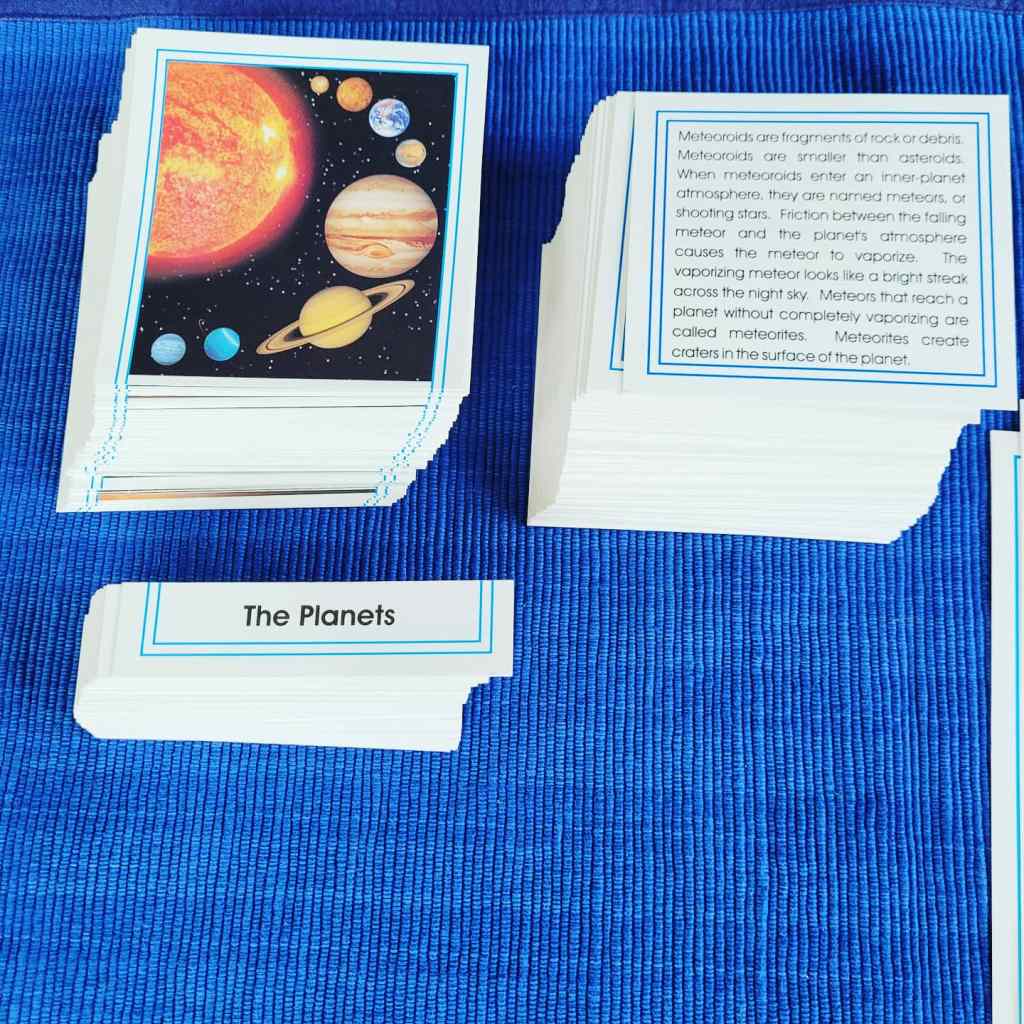
- An adult may conduct an initial introduction to the content. The content can be divided in multiple presentations since the curriculum is dense.
- The picture cards are placed on the left side, the label is placed below the picture, and the description is read and placed on the right side of the picture. The booklets serve first as learning guides, then as control for errors.
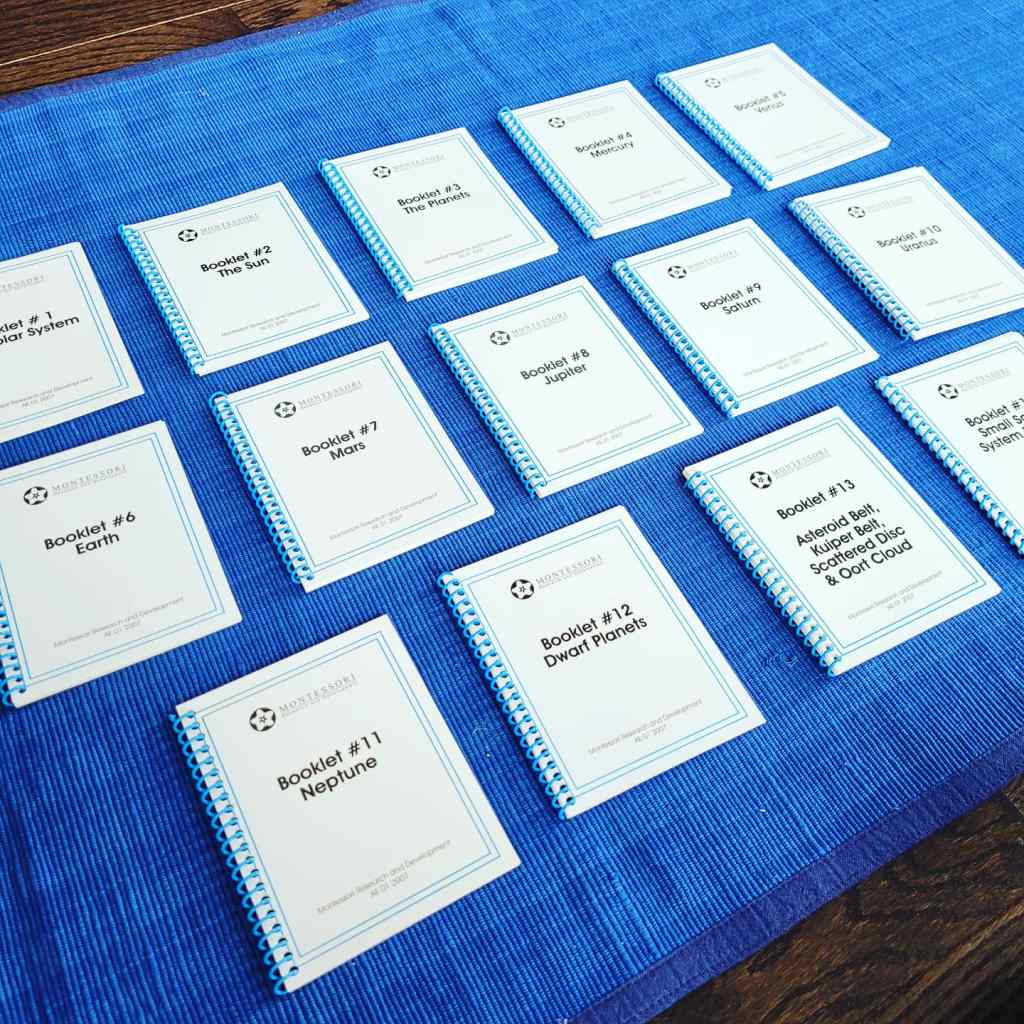
- Once the content has been introduced, the 3-part cards studied can be left at the disposal of children on a shelf.

- The wallcharts can be temporarily displayed on a wall. This helps children imprint the knowledge in their mind, and invites them to revisit the materials.
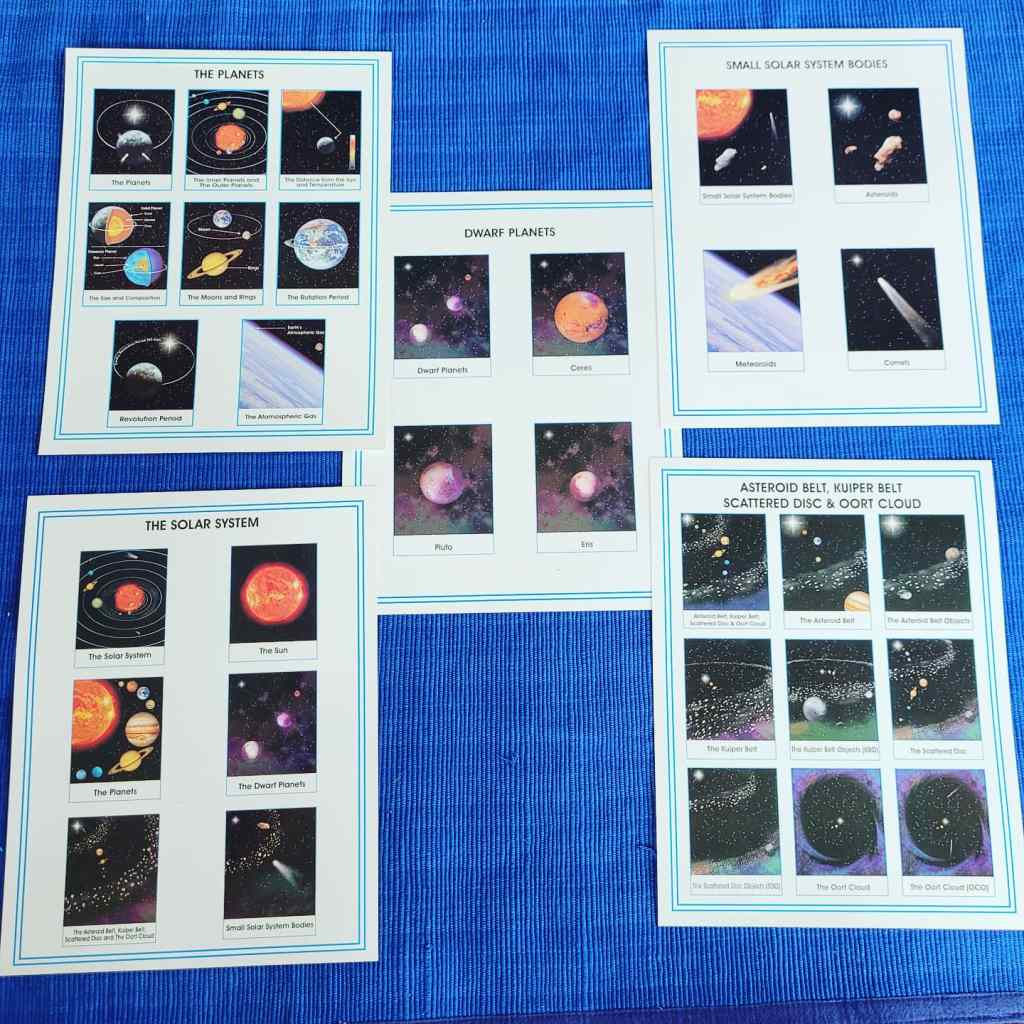
The Curriculum covers Lower and Upper Elementary, this means it is adapted for learners age 6-12. Children in Upper Elementary can use the materials to deepen their knowledge through research as they became more independent in researching information, and possess the tools for writing expository texts.
amzn_assoc_placement = “adunit0”; amzn_assoc_search_bar = “true”; amzn_assoc_tracking_id = “leilafarley-20”; amzn_assoc_ad_mode = “manual”; amzn_assoc_ad_type = “smart”; amzn_assoc_marketplace = “amazon”; amzn_assoc_region = “US”; amzn_assoc_title = “My Amazon Picks”; amzn_assoc_linkid = “2e6453fe99b85d5e3bcdb749fca292ff”; amzn_assoc_asins = “1536206237,1646119282,B07P5TTMLJ,B07JJYCHYX”; //z-na.amazon-adsystem.com/widgets/onejs?MarketPlace=USI hope this post was inspiring to you. It is meant to provide you an overview of effective Montessori materials. This experience has been made possible, thanks for Montessori Research and Develop for entrusting me, at no cost, with their materials. Disclaimer: Some links found on this page might be affiliate links. If you click an affiliate link and make a purchase, I might earn a commission. This helps with the website maintenance and cost, thank you.
- Ready for a lesson? Don’t miss the next reviews. Subscribe to receive notifications for my next posts.